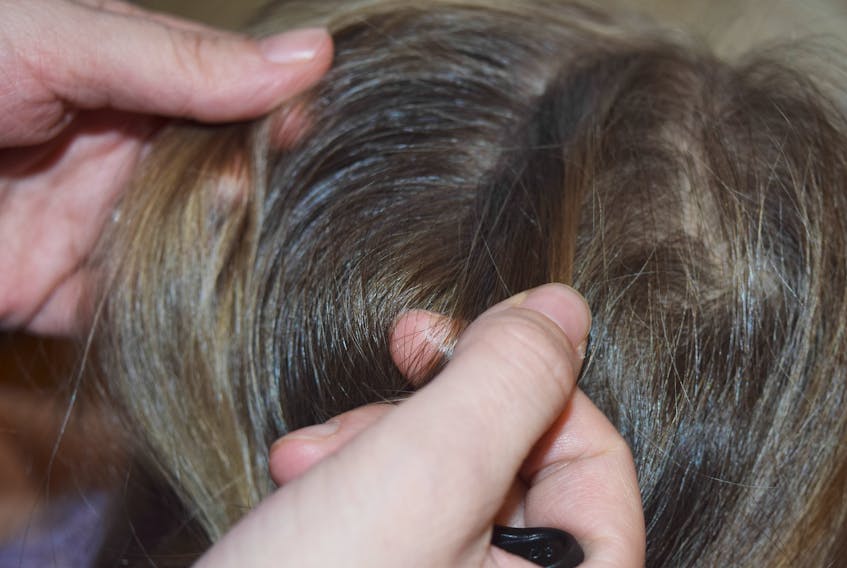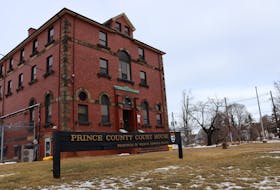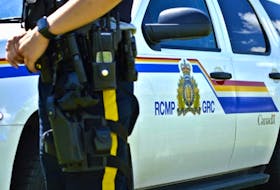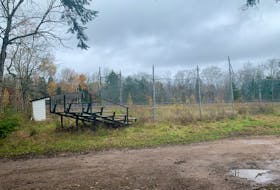STELLARTON
This is time of year where there are more than visions of sugarplums dancing in or on children’s heads.
Head lice often up in the fall, especially in the schools, as children dress warmer for the winter months. But other than being troublesome for parents and children trying to rid their scalps and homes of them, the bugs are not a health risk, says a local pharmacist.
“It’s an inconvenience, but not a health hazard,” said Kevin McKay, a pharmacist with the Medical Hall Pharmasave in Stellarton.
McKay said he usually sees an increase in people wanting lice treatments in the fall after the children are back to school.
He believes children are more susceptible to getting head lice because there are hats and combs in greater abundance in the schools allowing the tiny insects to be easily transferred from one child’s head to another.
The winter months, especially around the holidays, allow people to be much more social and in closer proximity as well which can help with the transfer of lice or even cold and flu viruses.
The good news, he said, is that there are many effective over-the-counter products available at pharmacies that have been used for many years to help rid a scalp, or any body part for that matter, of lice.
McKay said treatments such as Nix® or R&C® shampoos are the more common brands used for more than 20 years and they are similar to any insecticide that would kill a bug.
He said while some people are cautious about using insecticides on the scalp, the products are safe if the directions are followed and the treatments are not overused.
- are newer products on the market, such as Resultz®, a non-chemical insecticidal treatment that works by dissolving the wax covering on the exoskeleton of head lice, causing dehydration and subsequent death. NDYA® is also a newer non-chemical product that penetrates into the lice, larvae and egg’s breathing system, replacing the air.
An infected person’s head has to be combed through following the treatment to make sure all the live lice are dead and nits are removed.
Lice feed on humans and animals, usually in the hairy parts of the body. They bite through the skin to suck blood. The bites can cause itching and sometimes skin irritation. Lice attach their eggs, called nits, to the hairs in the scalp, genital area, or other parts of the body. The nits hatch after several days, producing more lice.
However, McKay cautioned, while all these products have been proven to be effective and safe, the key to ridding one’s head and home of lice is to repeat the process in seven to 10 days after the first treatment.
“A lot of people don’t do it a second time,” he said. “Or they aren’t doing the due diligence of cleaning the clothing, bedding and putting the stuffed animals in the freezer.”
Items that can’t be washed can be sealed in a plastic bag for two weeks or in a freezer for week, McKay said. Items that can be washed such as bedding and clothing, should be washed in hot water or put in the dryer for at least 15 minutes.
He also recommended that everyone in the home be checked for lice even if they aren’t scratching or showing any other symptoms.
According to Nova Scotia Health and Wellness sometimes lice don’t cause any symptoms. Most often, however, people have some itching. A person’s skin may become red and irritated, especially if they are scratching their skin. They might also have small, red, itchy bumps.
The nits look like tiny white dots attached firmly to a hair. They look like dandruff. Dandruff, however, is easily brushed out of the hair. Nits cannot be brushed or flicked off. They must be pulled off the hair with your fingers.
According to its policy, school children in the Chignecto-Central Regional School zone suspected of having live head lice will be sent home for treatment while students suspected of having nits may remain at school.
Students with nits can continue attending school and those sent home with live lice may return after the first treatment is complete. Parents are asked to check their children’s heads on a regular basis and let the child’s principal or teacher know if their child had head lice.
Facts about head lice:
• Do not jump, fly, or hop, but they crawl very quickly.
• Cannot live on pets or other animals.
• Can live off the head for up to three days, but their eggs, the nits, need a warm environment to develop – nits are not likely to hatch at room temperature.
• Adult lice are 2 to 4 mm long, or about the size of a sesame seed.
Lice move quickly and can be difficult to see, so it’s more likely that you’ll see nits.
• Nits are shaped like tiny teardrops and have a brownish white colour. They are about the size of a poppy seed. They are stuck firmly to individual hairs and will not move unless you pull them from the hair with your fingernails or a nit comb.
What to do when checking for head lice:
• Start behind the ears and check the entire head, hair by hair.
Check all hair from roots to tips. An easy way to find live lice is to use conditioner and a lice comb. White conditioner makes it easier see lice.
• Apply conditioner to dry hair, soaking the hair from the scalp to ends of the hair.
• Remove tangles from the hair using a regular comb.
• Immediately comb with a lice comb. Pick a place to start. Be sure you comb through all hair over the whole head.
• Place the lice comb against the scalp and pull it to the end of the hair.
• After each pull through the hair, check the teeth of the comb for lice. Wipe the conditioner off the comb onto a paper tissue and look for lice again. Place used tissues in a plastic bag.
• Repeat the combing for every part of the head at least five times.
Source: Nova Scotia Department of Health and Wellness









